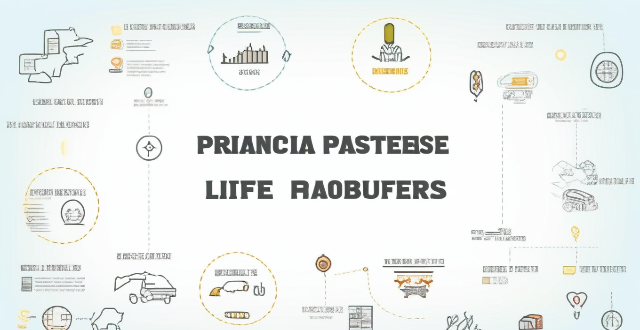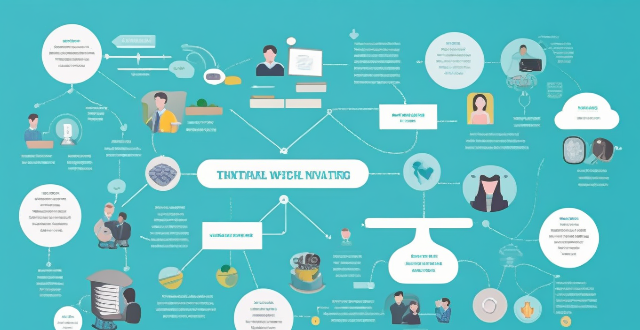Effective Estate

How can I minimize estate taxes in my estate plan ?
The text discusses strategies to minimize estate taxes in one's estate plan. These include understanding the basics of estate taxes, utilizing the lifetime exclusion, establishing trusts like irrevocable trusts and spousal lifetime access trust (SLAT), gifting to family and charities, life insurance planning through irrevocable life insurance trust (ILIT), using family limited partnerships or LLCs, seeking professional guidance, and staying informed about changes in tax laws.

Do I need a lawyer to create an estate plan ?
Estate planning is important for ensuring that your assets are distributed according to your wishes after you pass away. While it is possible to create an estate plan without a lawyer, working with a legal professional can provide numerous benefits such as legal expertise, customized plans, and peace of mind. However, if you have a simple estate with few assets and no complicated family dynamics, creating a basic estate plan using online tools or templates may be sufficient. It is still important to consult with a lawyer to ensure that your plan meets all legal requirements and addresses any potential issues.

How does having a blended family affect estate planning ?
Estate planning for blended families requires special considerations, such as establishing clear intentions for fairness and protection, drafting comprehensive legal documents including wills, trusts, and powers of attorney, updating beneficiary designations, navigating tax implications, and fostering open communication. It is crucial to work with estate planning professionals to ensure all family members are provided for according to the individual's wishes.

What role does life insurance play in estate planning ?
Life insurance is a crucial tool in estate planning, offering solutions for liquidity needs, tax considerations, charitable giving, business succession, income replacement, and wealth preservation. It helps beneficiaries gain immediate access to cash, manage estate taxes, support philanthropic goals, facilitate business transitions, replace lost income, and transfer wealth efficiently. Life insurance policies can be tailored to fit individual needs, making them a versatile component of any comprehensive estate plan.

What documents are typically included in an estate plan ?
An estate plan is a collection of legal documents that outline how an individual's assets and property will be distributed after their death. These documents can include various types of legal instruments, each serving a specific purpose in the estate planning process. Here are some of the most common documents included in an estate plan: - Last Will and Testament: A legal document that states how a person's property and assets will be distributed after their death. - Durable Power of Attorney: A legal document that grants authority to another individual (agent) to act on behalf of the principal in financial matters. - Healthcare Power of Attorney: A legal document that designates someone to make healthcare decisions on behalf of the principal if they are unable to do so. - Living Will: A document that provides instructions about your wishes for medical treatment and end-of-life care. - Trusts: A legal entity that holds and manages assets for the benefit of one or more individuals (beneficiaries). - Beneficiary Designations: The process of naming who receives the proceeds of a bank account, retirement account, or life insurance policy upon the account holder's death. - Letter of Intent: A non-legal document that provides additional information about personal wishes, sentimental items, and instructions for final arrangements.

How do I create a comprehensive estate plan ?
Creating a comprehensive estate plan is essential to ensure your assets are distributed according to your wishes after you pass away. Here are some steps to help you create a comprehensive estate plan: 1. Determine your goals and objectives, such as who you want to inherit your assets and how you want them distributed. 2. Gather information about all your assets, including real estate, bank accounts, investments, life insurance policies, and personal property. 3. Choose beneficiaries for your assets, including individuals, charities, or trusts. 4. Consider tax implications, such as federal and state estate taxes, gift taxes, and generation-skipping transfer taxes. 5. Create legal documents such as a will, power of attorney, healthcare proxy, and living will to ensure your wishes are carried out in case of incapacity or death. 6. Set up trusts to manage your assets during your lifetime and distribute them after your death. 7. Review and update your plan regularly to ensure it remains current with changes in your life. Working with a qualified professional can help ensure that your estate plan meets your needs and achieves your desired outcomes.

What is the difference between a living will and a durable power of attorney ?
Living wills and durable powers of attorney (DPAs) are vital estate planning tools with distinct purposes. A living will outlines medical treatment preferences, becoming effective only under specific health conditions, while a DPA grants broad financial and legal authority to an agent, typically effective immediately and continuing through incapacity. Both documents can be revoked by the creator if mentally competent but function differently upon incapacity. It is crucial to consult with an estate planning attorney for proper execution according to state laws.

How often should I review and update my estate plan ?
Estate planning is crucial for managing assets post-demise. It requires regular updates due to life changes, laws, and preferences. Major life events necessitate immediate attention. Annual reviews ensure documents are current and reflect personal relationship changes. Every three to five years, review to accommodate tax law changes and reassess beneficiaries. Law changes may also prompt updates. Regular reviews ensure your estate plan aligns with life's dynamics.

What role does real estate play in a retirement portfolio ?
The text discusses the role of real estate in a retirement portfolio, highlighting its potential benefits such as income generation through rental income and appreciation, serving as an inflation hedge by maintaining its value during inflationary periods and allowing rent adjustments, and providing diversification by being a non-correlated asset class and an alternative investment. It also outlines risks associated with real estate investments, including liquidity risk due to the illiquid nature of properties, market risk due to fluctuating property values influenced by local market conditions, and management responsibilities that come with owning rental property. The conclusion emphasizes the importance of considering these advantages and risks when incorporating real estate into a retirement strategy, along with the need for proper planning and consideration of personal circumstances.

How do immigration policies affect the real estate market ?
Immigration policies have a significant impact on the real estate market, affecting demand for housing, property prices, rental markets, and long-term urban development patterns. Open immigration policies can lead to an influx of new residents, increasing demand for housing and contributing to a diversification of the housing market. This can result in higher property values and rental rates, as well as more construction projects to accommodate the growing population. However, changes in immigration policies can also affect the availability of financing options for potential homebuyers, further influencing property prices. In addition, immigration policies can have long-term effects on urban development patterns, creating new opportunities for investment and development. Understanding these relationships is crucial for anyone involved in the real estate industry or considering investing in property within regions affected by changing immigration policies.

What are the implications of climate change on different asset classes, such as real estate or commodities ?
Climate change has significant implications for different asset classes, including real estate, commodities, financial assets, and alternative investments. Real estate values can be affected by rising sea levels, heat island effects, and water scarcity. Commodities such as energy, agricultural products, and metals may face supply disruptions and changes in demand. Financial assets like stocks and bonds may be impacted by carbon risk and the increasing importance of environmental, social, and governance factors. Alternative investments, including private equity and venture capital, may see increased interest in clean technology and sustainable real estate. Overall, investors must consider these climate-related factors when making investment decisions and incorporate sustainability into their portfolios.

What is estate planning ?
Estate planning is a comprehensive process involving the organization, management, and distribution of assets to minimize taxes and ensure wealth transfer to heirs. Key elements include wills, trusts, power of attorney, health care directives, beneficiary designations, gifting strategies, tax planning, asset protection, long-term care planning, family business succession, and charitable giving. Estate planning ensures wishes are honored, provides financial security, minimizes taxes and legal fees, and protects beneficiaries.

Have any celebrities opened up their mansions to the public for tours or events ?
Some celebrities have opened their mansions to the public for tours or events. Notable examples include Elvis Presley's Graceland, Michael Jackson's Neverland Ranch, Bob Hope's Toluca Lake Estate, George Lucas' Skywalker Ranch, and Oprah Winfrey's Montecito Estate. These properties offer fans a unique opportunity to glimpse into the luxurious lifestyles of famous individuals.

How do I provide for minor children in my estate plan ?
When it comes to estate planning, one of the most important considerations is how to provide for your minor children. Here are some steps you can take to ensure that your children are taken care of financially and emotionally after you're gone: Create a will or trust, name a guardian, establish a trust fund, consider life insurance, and make sure your beneficiaries are up-to-date.

Why is it important to have an estate plan ?
Having an estate plan is crucial for ensuring your wishes are honored, minimizing family disputes, and providing clarity on handling affairs.

How do I invest in real estate without buying property ?
Real estate investment offers wealth growth opportunities without buying physical property through options like REITs, crowdfunding, syndication, online platforms, and mutual funds/ETFs. These methods provide liquidity, diversification, and passive income potential while avoiding typical challenges of direct property ownership.

Can I include charitable giving in my estate plan ?
Including charitable giving in your estate plan is a way to support causes you care about, with potential tax benefits and the creation of a lasting legacy. You can include charitable giving through bequests in your will, charitable trusts, donor-advised funds, life insurance policies, retirement accounts, and donating appreciated stocks. It's important to consult professionals, understand tax implications, and regularly update your plan.

Are there any natural or eco-friendly disinfection solutions that are effective against viruses ?
The article discusses natural and eco-friendly disinfection solutions that are effective against viruses. It mentions four options: lemon juice and salt, white vinegar, tea tree oil, and hydrogen peroxide. Each option has a procedure for use and is effective in killing germs on surfaces. The article concludes that while these solutions may require more time and effort compared to chemical disinfectants, they offer a safer alternative for those concerned about environmental impact and health risks associated with harsh chemicals.

What are some effective ways to reduce under-eye bags and dark circles ?
Under-eye bags and dark circles can be a bothersome issue for many individuals. They are often caused by factors such as lack of sleep, stress, aging, and genetics. Fortunately, there are several effective ways to reduce these problems and improve the appearance of the under-eye area. In this article, we will discuss some of the most effective methods to achieve this goal.

Can I make changes to my estate plan without a lawyer ?
Making changes to an estate plan without a lawyer is possible but risky, as it can invalidate the plan or lead to unintended consequences. Simple updates like changing a beneficiary or using online will services might be manageable without legal help. However, understanding legal requirements, document formalities, and potential risks are crucial. Periodic reviews and seeking professional advice for complex situations or peace of mind are recommended.

How does real estate investing compare to other methods of wealth growth ?
This text compares real estate investing with other wealth growth methods. It outlines the advantages and disadvantages of real estate investing, such as appreciation, cash flow, tax benefits, leverage, and diversification, but also mentions liquidity issues, management responsibilities, market risks, high upfront costs, and the risk of tenant damage. The text then explores alternative wealth growth methods, including stock market investing, bond investing, cryptocurrency investing, art and antiques investing, and gold and precious metals investing. It highlights the pros and cons of each method, such as liquidity, diversification, stability, fixed income, high risk/high reward, technology exposure, aesthetic value, scarcity, subjectivity, storage and maintenance, hedge against inflation, physical asset, limited upside, storage and insurance costs, and no cash flow. Finally, the text emphasizes the importance of understanding the risks and rewards associated with each option and choosing the one that aligns with your financial goals and risk tolerance.

Where are some of the most famous celebrity mansions located ?
Celebrities often live in lavish, awe-inspiring homes that capture the attention of fans and the media alike. These mansions are not only architectural marvels but also symbols of success and luxury. Here's a list of some of the most famous celebrity mansions and their locations: 1. Oprah Winfrey's Montecito Estate - Situated on 23 acres, this estate features a main house with 7 bedrooms and 14 bathrooms. It includes an orchard, a tea house, a barn, and a tennis court. 2. George Clooney's Villa Oleandra - This stunning property overlooks Lake Como and comes with a swimming pool, a gym, and a home theater. It was originally a simple farmhouse but has been renovated into a luxurious villa. 3. Jay-Z and Beyoncé's Bel Air Mansion - This contemporary mansion spans 19,000 square feet and boasts 8 bedrooms, 11 bathrooms, a basketball court, and a music studio. The couple purchased it for approximately $88 million. 4. Taylor Swift's Rhode Island Estate - This coastal retreat is known for its stunning ocean views and includes multiple houses on the property. There's also a private beach and a pier. 5. Kim Kardashian and Kanye West's Hidden Hills Home - This minimalist mansion has 4 bedrooms and features a gym, a movie theater, and a hair salon. It also has a unique all-white color scheme throughout. 6. Howard Stern's Penthouse Suite - This apartment takes up three floors of a building and includes a massive master bedroom suite, a recording studio, and panoramic city views from its numerous terraces. 7. Tom Brady and Gisele Bündchen's Brookline Mansion - This expansive estate sits on 5 acres of land and includes a moat, a gas lighting system, and a 6,600-square-foot mansion with 12 bedrooms. 8. Simon Cowell's Malibu Beach House - Overlooking the Pacific Ocean, this beachfront property features floor-to-ceiling windows offering unobstructed ocean views, a large outdoor patio, and direct beach access. 9. Elon Musk's Bel Air Estate - This modern mansion is equipped with a two-story library, a smart home system, and an underground garage that can hold up to 100 cars. It was previously owned by Gene Wilder. 10. Michael Jordan's Chicago Estate - This sprawling estate includes a basketball court, a putting green, a regulation-size tennis court, and a separate guest house. It also has an infinity pool with views of Lake Michigan.

What are some of the most extravagant celebrity mansions ?
The most extravagant celebrity mansions are a testament to their wealth and fame. From Oprah Winfrey's Montecito Estate to Bill Gates' Xanadu 2.0, these sprawling estates and luxurious penthouses boast impressive features like multiple buildings, gourmet kitchens, tennis courts, gyms, tea houses, garages that can hold up to 23 cars, tram systems, libraries with domed roofs, reception halls with walls of glass overlooking lakes, state-of-the-art recording studios, pool houses with full kitchens, basketball courts, private movie theaters, hot tubs on outdoor decks, and private beaches on the Atlantic Ocean.

What are some examples of successful educational games and what makes them effective ?
Educational games have become popular for engaging students and making learning enjoyable. Successful examples include Minecraft: Education Edition, Kahoot!, Osmo Genius Kit, and CodeCombat. These games are effective due to their engagement, adaptability, immediate feedback, collaboration, and real-world application. Incorporating these elements can create a more enjoyable and effective learning experience.

What is the impact of smart home technology on the real estate market ?
Smart home technology has a significant impact on the real estate market by increasing home value, improving energy efficiency, enhancing security, allowing for customization and personalization, and integrating with other technologies. This makes homes equipped with smart devices more attractive to potential buyers, leading to faster sales and higher prices.

How do celebrity mansions compare to other types of luxury real estate, such as penthouse apartments or beachfront properties ?
Celebrity mansions are often compared to other types of luxury real estate, such as penthouse apartments or beachfront properties. While all these properties share some common features, there are also significant differences between them. In this article, we will explore the similarities and differences between celebrity mansions and other types of luxury real estate.

How can I find reliable and effective programming tutorials online ?
Finding reliable and effective programming tutorials online can be a daunting task, especially for beginners. However, with the right approach and tools, you can easily find high-quality resources that will help you learn programming effectively. Here are some tips on how to find reliable and effective programming tutorials online: 1. Identify Your Learning Goals 2. Use Reputable Sources 3. Look for Reviews and Ratings 4. Check for Updates and Maintenance 5. Practice and Apply What You Learn

What are the key characteristics of effective sports leadership ?
Effective sports leadership is crucial for the success of any team or organization. It involves a combination of skills, traits, and behaviors that enable leaders to inspire, motivate, and guide their athletes towards achieving their goals. Here are some key characteristics of effective sports leadership: 1. Visionary and Strategic Thinking 2. Communication Skills 3. Motivational Abilities 4. Emotional Intelligence 5. Decision-Making Skills 6. Accountability and Responsibility

What are the key elements of an effective infographic ?
An effective infographic should convey complex information in a clear, concise, and visually appealing manner. The key elements of an effective infographic include a clear purpose, concise and relevant information, visual hierarchy, compelling visuals, consistent design, interactive elements (optional), call to action (CTA), and accessibility. By incorporating these key elements, you can create an effective infographic that not only looks good but also effectively communicates its intended message to the target audience.

How do I create an effective study plan ?
Creating an effective study plan is crucial for academic success. Here are some steps to help you create a successful study plan: 1. Set clear goals that are specific, measurable, achievable, relevant, and time-bound (SMART). 2. Assess your time and determine how much you can realistically dedicate to studying each day/week. 3. Allocate time for each subject based on difficulty level and proficiency. 4. Create a schedule using a calendar or planner and stick to it as much as possible. 5. Incorporate short breaks during study sessions to avoid burnout and maintain focus. 6. Regularly review progress and adjust the study plan accordingly. 7. Eliminate distractions by finding a quiet place to study and turning off unnecessary devices. 8. Stay motivated by reminding yourself of goals and celebrating small achievements. 9. Seek help when needed from teachers, tutors, or classmates. By following these steps, you can create an effective study plan that will help you achieve academic success while managing your time efficiently. Remember to stay flexible and adjust your plan as needed to accommodate changes in your schedule or priorities.